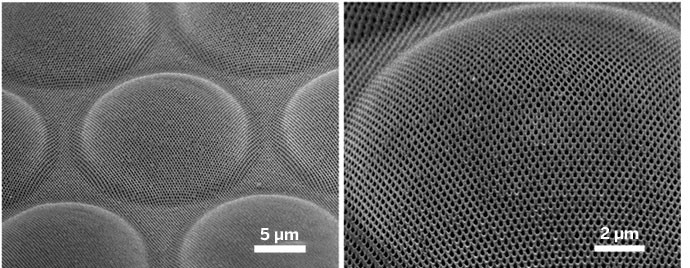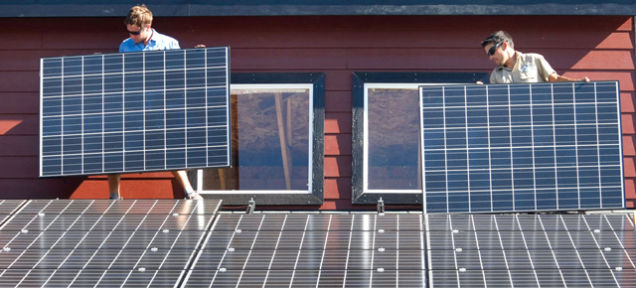Inspiration lies in the strangest of places — and for researchers at the Agency for Science, Technology & Research in Singapore, that includes the eye of moth. A new antireflective coating inspired by the creature’s ocular faculties could help bump up the efficiency of solar cells.
The eyes of nocturnal moths contain a series compound lenses: micro lenses called ommatidia which are themselves patterned with a nanoscale dome-shaped bumps. These structures naturally help reduce reflection of light at a wide range of wavelengths, enabling better night vision to help moths navigate in the dark. (Incidentally, they also stop water collecting on the eye, but that’s less important here.)
The ability to capture light and not let go is appealing in the world of solar cells because it can increase efficiency. So the team from Singapore has taken inspiration from the complex lens structure to create a process that stamps patterns over the surface of a material, replicating the antireflective effects of the moths’ eyes. The results are published in ACS Nano.

The new process uses nanoimprint lithography, a fancy term for stamping microscopic patterns onto materials. Using nickel moulds, a repeating series of 200-nanometre diameter domes was stamped onto the surface of a polycarbonate. Then, a second series of of larger lens shapes — between 2 and 25 microns across — was stamped onto the same material. The result was a surface covered in a pattern very similar the moths’ eyes (shown above). In tests, the surface reflects just 4.8 per cent of incident light between 400 to 1000 nanometers in wavelength.
It’s hoped that surface treatments like this could be applied to the materials used in solar cells to ensure they absorb as much light as possible. The next step for the researchers, though, is to scale up the process so that it can be used to quickly prepare large sheets of material. Currently, they’re investigating if they can achieve that using a roller printer. [ACS Nano via Chemcial & Engineering News]
Picture: AP Photo/Jerry McBride, ACS Nano
